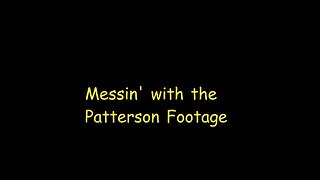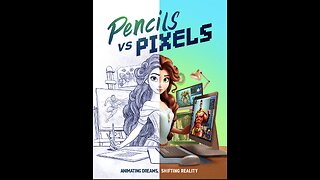Neighbours c. 1952 : First short with pixilation technique
Neighbours is one of the most important works by animator Norman McLaren and the first short to use live-action actors to make a stop-motion film, a technique called pixilation. The story, which is an antiwar parable, and which was greatly scrutinized when it came out in 1952 (McLaren said he was inspired by witnessing “the beginnings of Mao’s revolution” in the People’s Republic of China), plays out over just eight minutes and shows two men fighting over a flower.
In Neighbours, it’s plain to see exactly how McLaren influenced the industry, with each frame picked and displayed with care, beginning with the scene’s coyly counterposed newspapers. The pixilation and editing in Neighbours allow for a number of visual gags that wouldn’t have been possible in a more straightforward live-action film, no matter how appealing are its two brigands, Jean-Paul Ladouceur and George Munro (who is also credited with innovating the pixilation technique) — from seeing them float mid-jump to creating fences out of thin air. Not only does Neighbours build tension and offer a unique way of presenting his simple story; it forces the viewer to confront the relationship between animation and live-action film. The short went on to win an Academy Award and a Canadian Film Award.
Over the years, McLaren made many more contributions to the medium, mostly in his experiments combining animation with music. He also founded the National Film Board of Canada’s animation department, which cultivated the artistry of several notable independent animators, and taught animation in China and India.
https://www.vulture.com/article/most-influential-best-scenes-animation-history.html
-
 4:14
4:14
TCC Research
1 year agoMessing with the Patterson Footage | Enhancement
5 -
 5:34
5:34
BALDBOOKGEEK
2 months ago $0.25 earnedtake it easy film lab - film photography
181 -
 2:22
2:22
reallybigname
1 year agoKnerkVaffle?!¿¡ - Early B&W Experiments and Shimmering Color Film
2 -
 1:52
1:52
Welcome to the world of cinematic wonders! S Join me on a thrilling journey
7 months agoPencils vs Pixels (2023)
12 -
 7:00
7:00
Friendly Monkey Media
1 year agoHow to Create Hollywood Sets Using Miniatures
36 -
 5:08
5:08
Tom Antos
3 years agoFraming and Composition with Anamorphic Lenses: Filmmaking Tutorial Part 1
57 -
 21:18
21:18
Tom Antos
3 years agoFast and Simple Photo Shoot
41 -
 17:55
17:55
Peter von Panda
6 years agoMy painting from the groundbreaking Loving Vincent animated movie
49 -
 5:56
5:56
Peter von Panda
6 years agoLimited Edition End Credit Book from the hand-painted movie, Loving Vincent
24 -
 4:48
4:48
Tom Antos
3 years agoCinematic Camera Movement: Anamorphic Filmmaking Tutorial Part 2
19